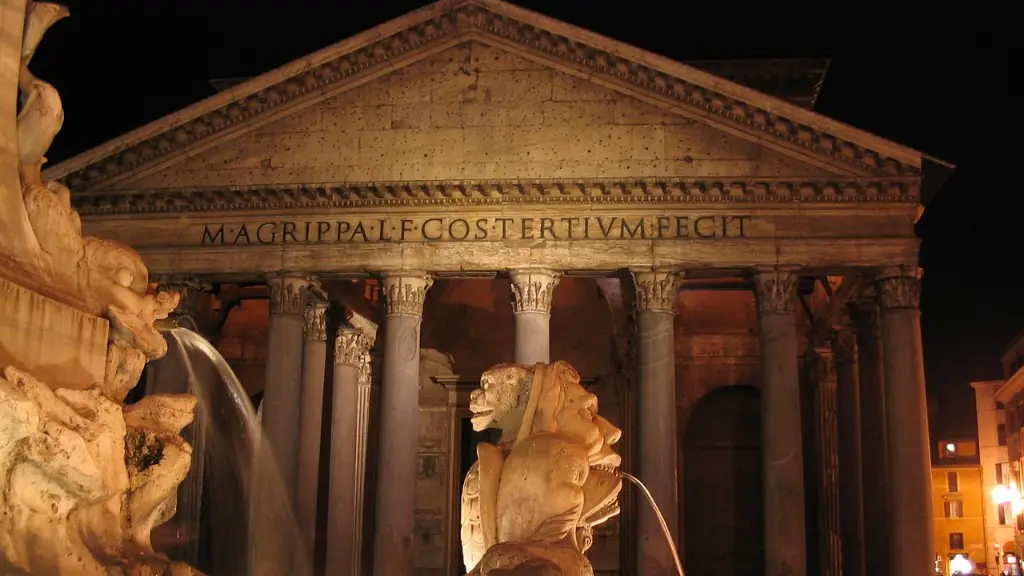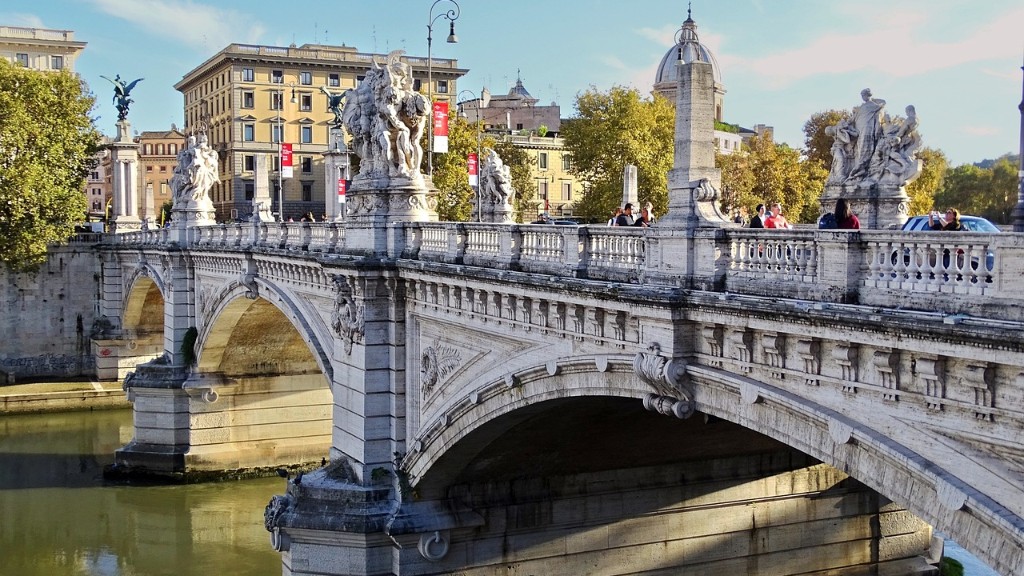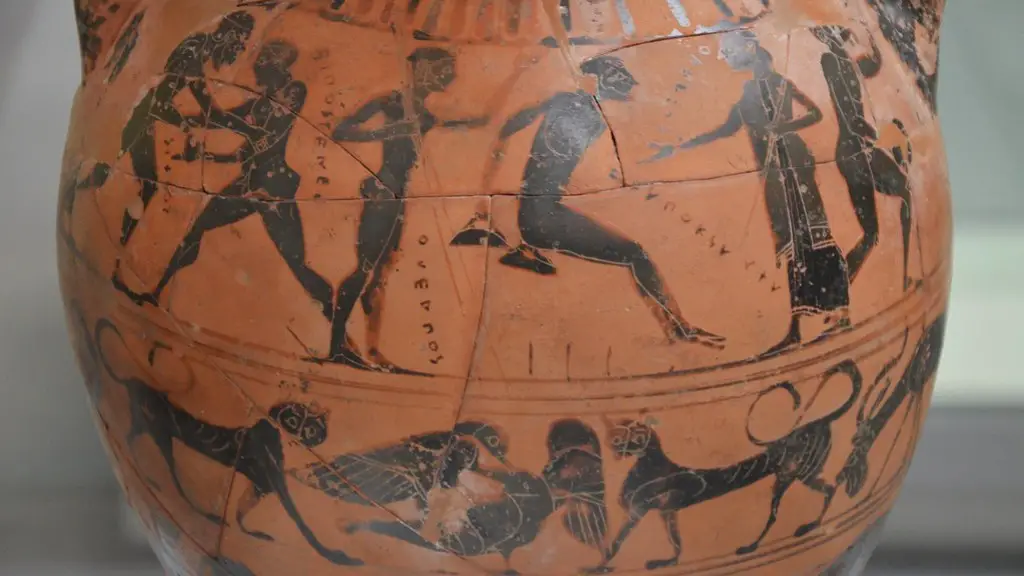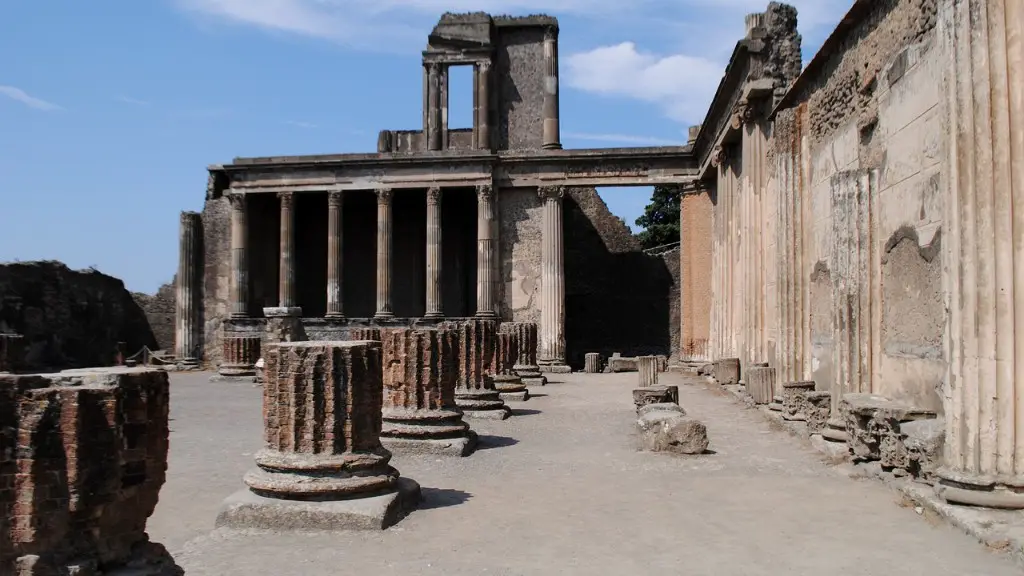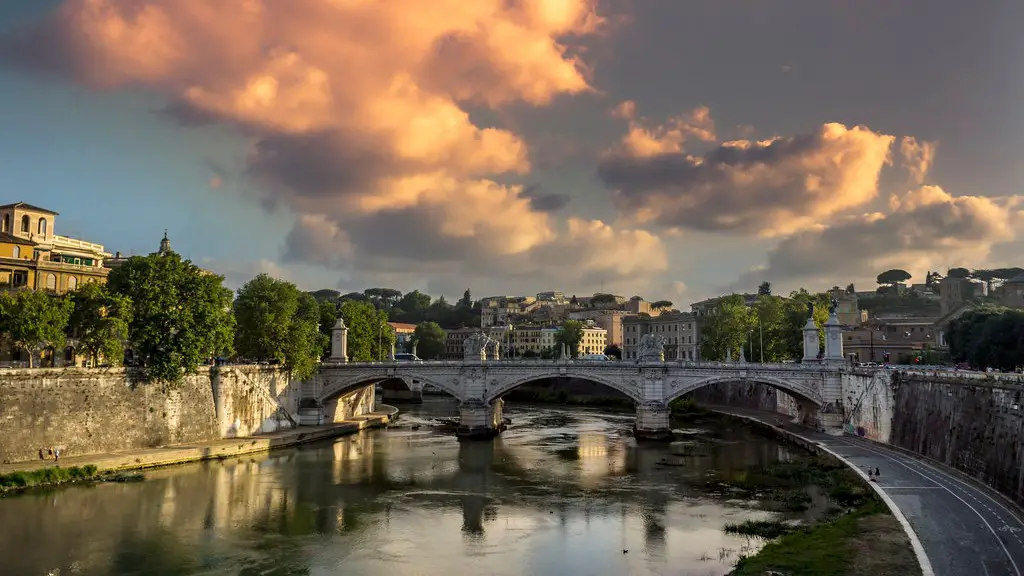Ancient Rome boasts a rich religious history, with citizens paying homage to gods, goddesses, heroes, and other spiritual figures. Ancient Roman religion strives to help citizens find peace and order in their lives. Religion was embedded in everyday life where citizens actively participated in religious activities and festivals. Rome’s religious life was varied and interconnected with the political system to ensure a successful government.
Roman deities were deities for both public and private life. Public deities, such as Jupiter, Juno, and Minerva, gave the citizens of Rome a patron deity to protect their city from harm. This devotion to Rome was joined with a devotion to the state, which helped create a unified sense of identity among the citizens of Rome. The Roman pantheon also included other less important gods and goddesses who looked after certain aspects of daily life. For example, Vesta was a goddess of hearth and home, and Janus was known as the door keeper. Private deities were seen as more personal and were often family gods, such as Lares, Penates and personal genius. This sort of devotion to the gods was seen as beneficial as it encouraged the citizens to express their gratitude to the gods through offerings, prayers and rituals.
Religious rituals were also integral to Roman life. These rites ranged from purely private ceremonies held in the home, to public festivals, to the highest forms of state religion. Sacrifice was seen as an extremely important ritual to both private and state religion. Animals were slaughtered and their entrails were examined for omens of future events. As part of the state religion, the Vestal Virgins were responsible for maintaining the sacred flame of Vestyss in Rome’s public forum. The Vestys were seen as a symbol of Rome’s power and success and were believed to be divinely protected, so if the sacred fire was extinguished it was seen as a grave omen that threatened the safety of the city.
Religious festivals were also an important part of ancient Roman life. These festivals celebrated important gods and goddesses and had religious, political, social, and practical aspects. For example, the floronia was a festival that celebrated the goddess Flora and was also used to promote fertility and agricultural productivity. Later festivals, such as the Saturnalia and the Ludi, were more focused on pleasure and celebratory activities rather than religious rituals. These festivals were an important part of Roman life as they provided an opportunity for citizens to come together and celebrate.
The ancient Roman religion was tightly integrated with the culture and government of Rome. Political and religious figures were intertwined and religious rituals were used to unify the city and provide guidance on how to lead a successful life in Ancient Rome. Religion provided comfort and stability to the citizens and their beliefs in the gods were seen as divinely protected. Festivals were used as an important part of Roman life to bring citizens together, pay homage to the gods, and find strength in their shared religious practices.
Influence of Ancient Roman Mythology
Mythology is an important part of Ancient Roman culture and many of their gods, goddesses, and heroes have Roman origins. Roman myths are often amalgamations of stories from around the Mediterranean and the Etruscans and Greeks, who heavily influenced their religious practices. For example, the goddess Juno was based on the Greek goddess Hera, while other gods such as Jupiter and Mars have also been linked to their Greek counterparts. The influence of other religions has also been seen in Roman practices, with early depictions of Latin gods being taken from Egyptian and Syrian gods.
Roman mythology and beliefs have influenced many aspects of culture and society. The Roman gods and goddesses are often used in literature and art as symbols of power, strength and beauty. Roman myths and legends can be seen in gaming and films, inspiring story tellers to borrow from the elements of Roman culture. Roman religious beliefs and practices continue to influence their modern counterparts, from the traditional rituals of the Catholic Church to modern Pagan practices.
Changes to Ancient Roman Religion
Ancient Roman religion changed drastically over time as new beliefs were adopted and old ones were rejected. Early in Rome’s history, religion was seen as an important part of everyday life, with citizens actively participating in rituals and offering sacrifices to the gods. However, as Rome became more powerful and influenced by other cultures, their beliefs began to change.
The traditional gods of Rome were largely replaced with foreign gods, who were adopted by the Romans and given Roman names. This syncretism was common in Ancient Rome and was a way for the Romans to incorporate new beliefs into their practices. As Rome became more urbanised, practices such as animal sacrifice and other domestic religious activities became less popular as they were seen as primitive and unsustainable.
The rise of Christianity also had an immense impact on Ancient Roman religion, eventually leading to its decline. Christianity was seen as a direct challenge to religious practices and its followers were persecuted for their beliefs. Even though Ancient Roman religion has declined, its influence can still be seen in modern society.
The Study of Ancient Roman Religion
The study of Ancient Roman religion has been of interest to archaeologists and historians for centuries. Much of what is known about Roman religious practices comes from archaeological evidence and written sources. Archaeologists often look at religious sites such as temples and shrines to understand traditional practices. Written sources such as Pliny the Elder’s Natural History, provide insights into the beliefs and rituals of Ancient Rome. Historians use these sources to piece together a better understanding of religious practices in Ancient Rome.
Despite the popularity of studying Ancient Roman religion, there are still several gaps in our knowledge. For example, there is still debate about the origins of certain gods and myths. In addition, there is limited evidence about the private lives of Roman citizens and how their religious beliefs and practices were expressed. This uncertainly has prevented a full understanding of Ancient Roman religion.
Modern Interpretations of Ancient Religion
Modern interpretations of Ancient Roman religion have been influenced by archaeological and historical evidence gathered over the centuries. Some have argued that Ancient Roman religion was an attempt to incorporate elements of other Mediterranean cultures into traditional Roman beliefs. Others have suggested that Ancient Roman religion was an attempt at unifying the citizens of Rome. Either way, it is clear that religion was deeply embedded in the culture and politics of Ancient Rome.
Modern interpretations of Ancient Roman religion can also be seen in modern beliefs and practices. In modern Paganism, the gods, goddesses, stories and rituals of Ancient Rome are often used to inform their practices. Modern Pantheists look to Ancient Rome as a source of inspiration and guidance in their spiritual lives. As a result, Ancient Roman religious practices have had a lasting impact on modern societies and beliefs.
Practices of Ancient Roman Religion Today
Although Ancient Roman religion has largely been lost to modernity, there are still some individuals who practice the religion. A wide range of interpretations can be found within this community, from those who use Ancient Roman sources as a source of inspiration in their spiritual lives, to those who closely adhere to traditional Roman religious practices.
These practitioners often seek to recreate the religious rituals of Ancient Rome as closely as possible, using archaeological and written sources. This includes performing sacrifices, honoringshrine offerings, participating in festivals and solemn religious ceremonies, and even practicing divination.
In recent years, there have been calls to revive certain aspects of ancient Roman religion. For example, there has been a renewed focus on traditional Roman roles and practices, as well as an appreciation of the founders and creators of Rome. As a result, more people are becoming interested in ancient Roman religion and its modern interpretations.
Conclusion
Ancient Rome had a complex and varied religious life that was deeply integrated into its culture and politics. The Pantheon of gods, heroes and goddesses were seen as divinely protected and promoted a unified sense of identity among the citizens of Rome. Ancient Roman religious practices were heavily influenced by other cultures and religions and its rituals were used as a way to bring citizens together and celebrate. Religion provided comfort and stability to the citizens of Rome and continues to influence modern beliefs and practices. Despite the passing of centuries, ancient Roman religion still has an appeal to modern people and its practices are being embraced by some contemporary practitioners.
